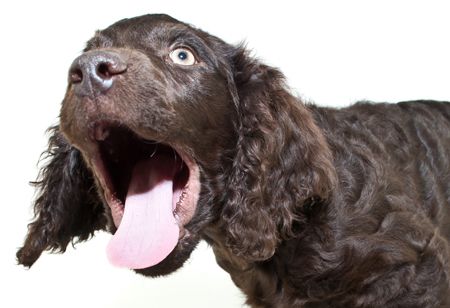Open up and say "... oh no ...": Guidance on oral tumors in veterinary patients
A big bonus of a thorough veterinary oral examination: You can spot oral tumors as well. The downside: You may spot an oral tumor.

(Shutterstock)While you're looking for signs of dental disease in your veterinary patients, you can detect oral tumors too. At a recent CVC, veterinary dentist Dr. Heidi Lobprise told us the most common ones in dogs and cats.
Benign oral tumors-focal fibrous hyperplasia or peripheral odontogenic fibroma (formerly known as epulis) and canine acanthomatous ameloblastoma (formerly known as acanthomatous epulis), which is pretty aggressive, according to Dr. Lobprise
Most common malignant oral tumors in dogs-malignant melanosarcoma, fibrosarcoma and squamous cell carcinoma
Most common malignant oral tumors in cats-gingival, sublingual and tonsillar squamous cell carcinoma
Since you typically do a thorough dental examination just once a year (let's hope!), enlist your clients in keeping watch as well-peeking into their pets' mouths and looking for odd growths. “It's really important to get the owners aware of oral tumors and for us to do a good exam to make sure we can catch them,” says Dr. Lobprise. “Because the earlier we can catch oral tumors, the better the chance of us having a good result.” Hear it all straight from Dr. Lobprise here.
One of the treatment options for oral tumors is, of course, chemotherapy. So while we're on the subject of client education and oncology, we've got two handouts on chemo in pets for any type of cancer (oral or otherwise) from veterinary oncologist Dr. Sue Ettinger.
The handout on home care for patients receiving chemo-available at dvm360.com/homechemo-will, first off, allay clients' fears in that 80% of pets of have no side effects from chemotherapy. The handout gives pointers for what clients can do if their pet falls into the 15% to 20% that do have side effects and when to contact you with concerns.
Dr. Ettinger also covers how owners can best care for their pets-and protect themselves-after chemotherapy has been delivered. For example, a small amount of chemotherapeutic drugs and their metabolites are excreted in urine and feces. So wearing gloves is imperative for handling feces or urine for at least 72 hours after treatment.
Do your clients have questions about chemotherapy in general, such as what about hair loss? Here's one tidbit from Dr. Ettinger's handout on chemotherapy FAQs: “This side effect is usually mild in dogs but can show up unexpectedly. It's not nearly as common as it is in people receiving chemotherapy because dogs' hair does not grow continuously throughout their lives.” Download this client handout at dvm360.com/chemoFAQ to give clients the whole story.